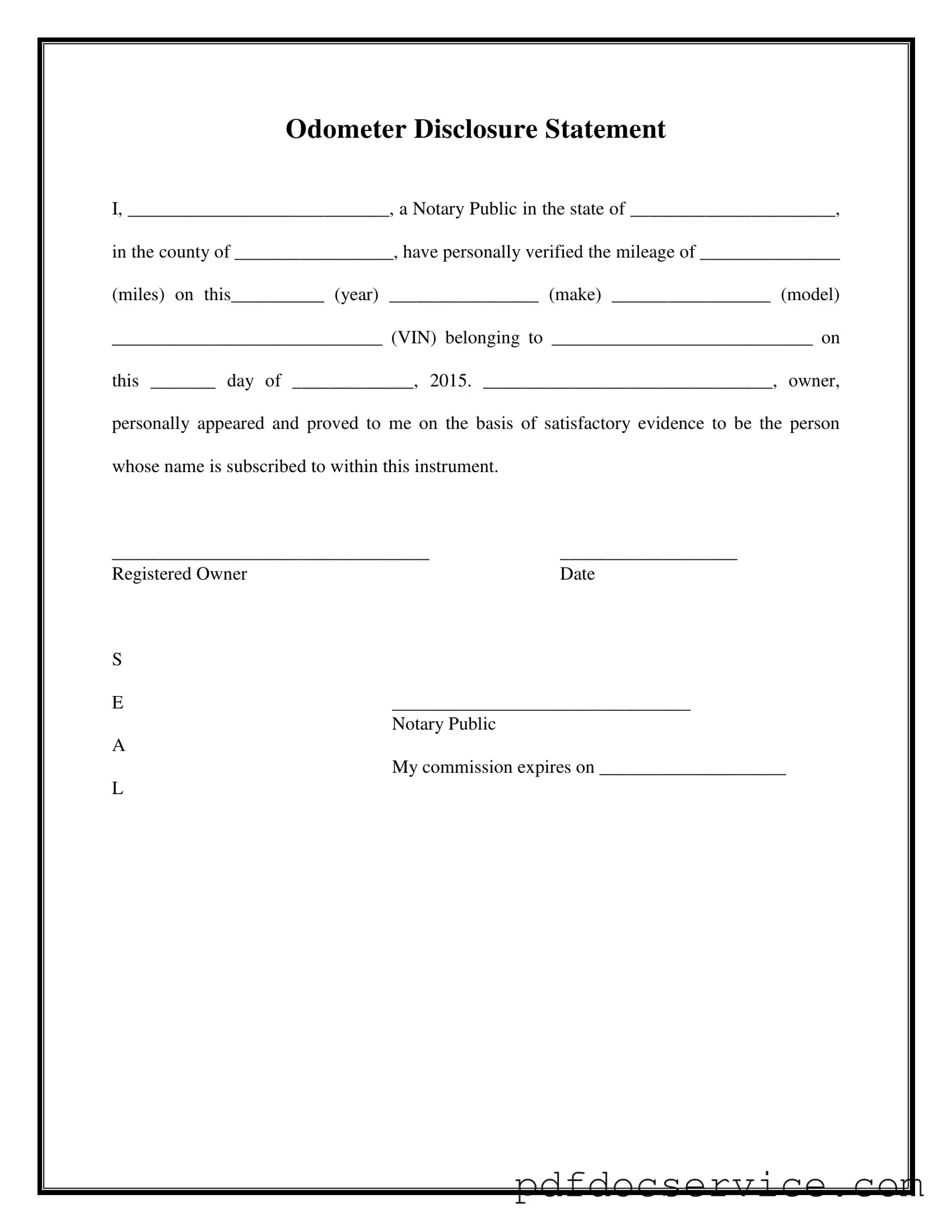What is a Notarized Odometer Statement?
A Notarized Odometer Statement is a legal document that verifies the mileage of a vehicle at the time of sale or transfer. This form is typically required in many states to prevent odometer fraud. It includes details such as the vehicle's make, model, year, and Vehicle Identification Number (VIN), along with the mileage reading. The statement must be signed in the presence of a notary public, who confirms the identity of the person signing the document.
Why do I need a Notarized Odometer Statement?
This statement protects both the buyer and the seller. For buyers, it provides assurance that the mileage reported is accurate and helps avoid potential disputes later on. For sellers, it serves as a safeguard against claims of odometer tampering. Many states require this form to be completed for the registration of a vehicle, making it an essential part of the transaction process.
How do I complete a Notarized Odometer Statement?
To complete the statement, follow these steps:
-
Fill in the required fields, including the vehicle's make, model, year, and VIN.
-
Record the current mileage of the vehicle.
-
Provide the name of the registered owner.
-
Sign the document in the presence of a notary public.
-
The notary will then verify your identity and complete their section of the form.
Ensure that all information is accurate before signing, as errors can complicate the registration process.
Where can I get a Notarized Odometer Statement?
You can obtain a Notarized Odometer Statement from various sources:
-
Your local Department of Motor Vehicles (DMV) may provide a template.
-
Many online legal services offer customizable forms.
-
Local notary offices may have copies available.
It's important to use the correct form required by your state to ensure compliance with local laws.
How much does it cost to get a Notarized Odometer Statement?
The cost can vary based on several factors. If you obtain the form from a DMV or online service, it may be free or have a nominal fee. However, notary services typically charge a fee for their time, which can range from $5 to $20 or more, depending on the state and the notary's rates. Always inquire about the total cost before proceeding.
Is there a time limit for submitting a Notarized Odometer Statement?
Yes, there is often a time limit for submitting this statement. Each state has its own regulations regarding how quickly the document must be filed after the sale or transfer of a vehicle. Generally, it should be submitted at the time of registration or within a few days of the transaction. Check with your local DMV for specific deadlines to ensure compliance.
